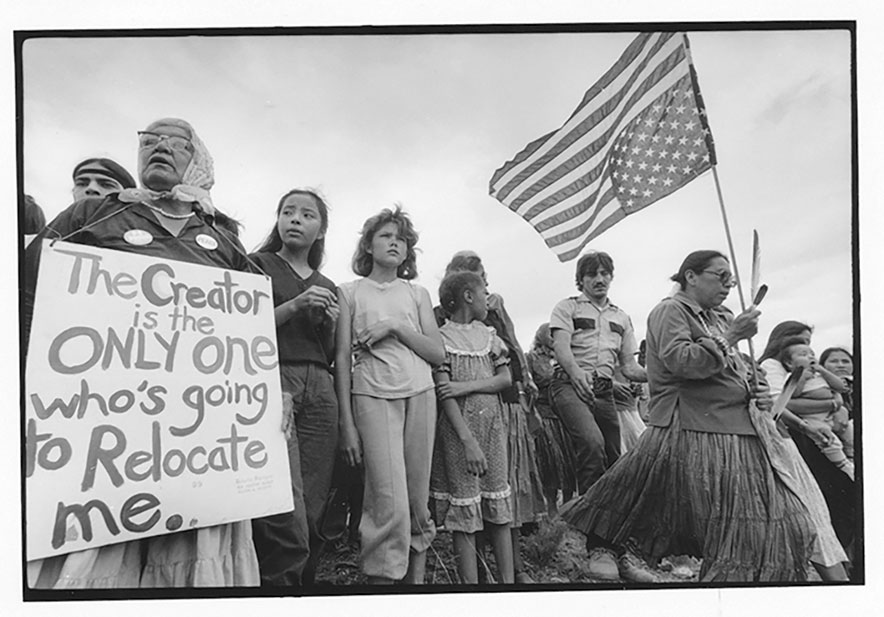
Navajo-Hopi relocation still impacting Navajo families in 21st century

Navajo Times | Kenji Kawano
Steadfast and resolute. These Navajo elders use an inverted American flag as a signal of distress to sign their long-held frustration, anger and disappointment with the federal government decision to transfer land they called home to the Hopi Tribe and attempt to remove them through the relocation process. Editor’s note: A different angle of this image ran in the July 8, 1986, edition of the Navajo Times Today. The image ran on A1.
By Rick Abasta
Special to the Times
GALLUP
The pain of forced relocation still burns in the hearts of many Navajos.
Thirty-seven years ago, Navajo families faced eviction by the federal government from Hopi Partitioned Lands. The government told them they had to leave their homes by July 6, 1986.

Navajo Times | Kenji Kawano
Big Mountain, Ariz., protesters fighting relocation in the 1980s as part of the Navajo-Hopi land dispute.
The deadline has come and gone, but Navajos are still struggling with the aftereffects of forced relocation. Today, Navajo families still reside on HPL.
This tragedy resulted from modern federal Indian policy, causing untold hardship for thousands of Navajos who found themselves homeless and landless.
The impact of the federal government’s decision to remove Navajo families from their homelands will continue to be endured by Navajo generations.
Growing up on HPL
Former first lady Phefelia Nez (married to former President Jonathan Nez) grew up on what became HPL. She was 10 years old in July 1986, living on HPL with her parents and nine siblings.
She grew up in a hogan built by her parents, hauling water, chopping wood, and tending to livestock. Sometimes, they cultivated a garden in their self-sufficient and independent lifestyle. Like most families living on HPL, they were self-reliant with no outside help.
“My mother never relocated. In 1996, she signed the 75-year lease, also known as the accommodation agreement, with the Hopi Tribe,” she said.
Her mother remained in her tribal homelands until May 2022, when she died. Her father relocated to the master-planned community of Newlands, Arizona, also known as Nahat’á Dziil, in 2000. He lived in the Kelsey community, one of 14 communities with residential and pasture areas.
Read the full story in the July 13 edition of the Navajo Times.








 Highway 264,
Highway 264, I-40, WB @ Winslow
I-40, WB @ Winslow